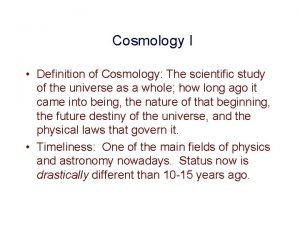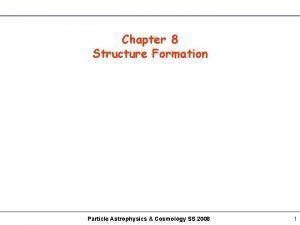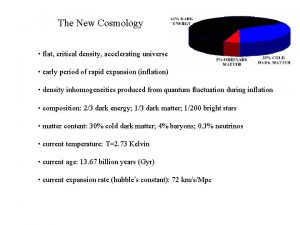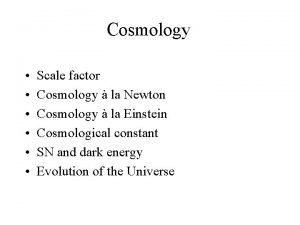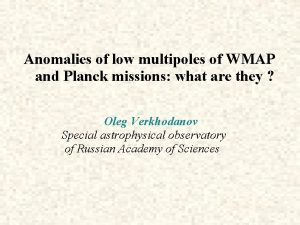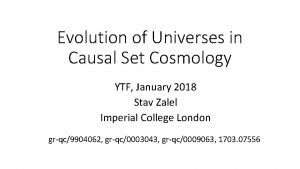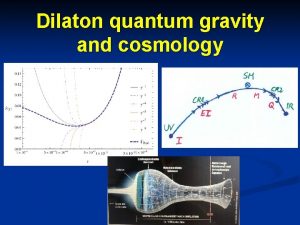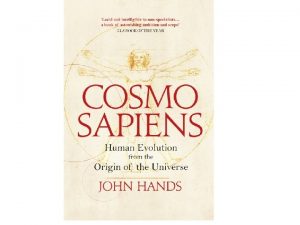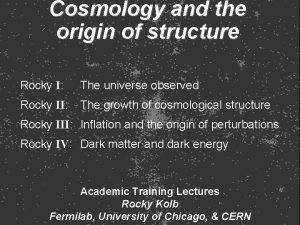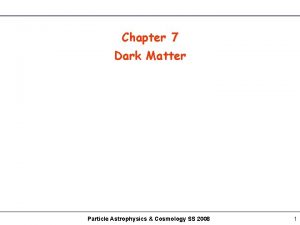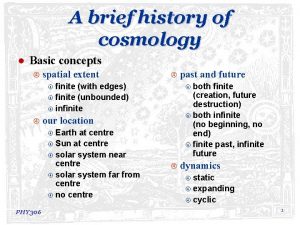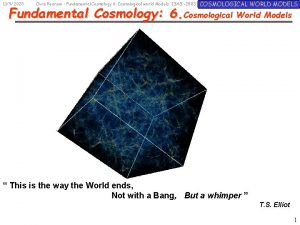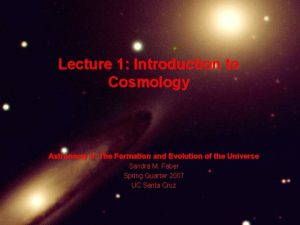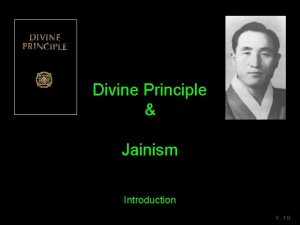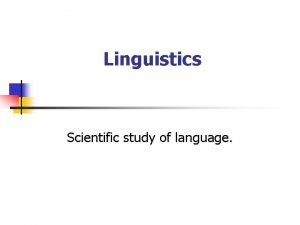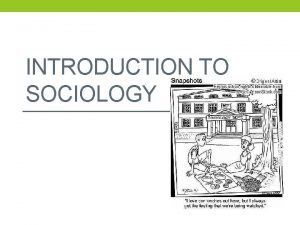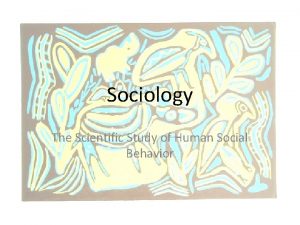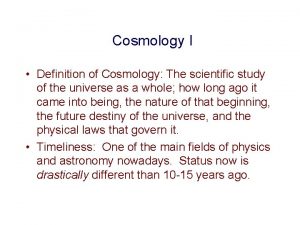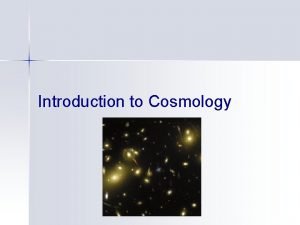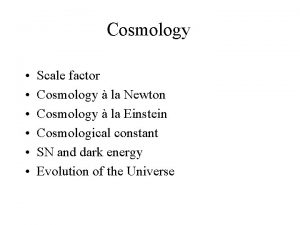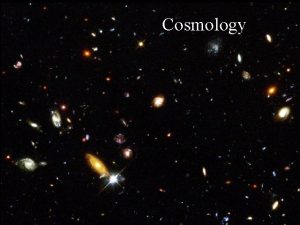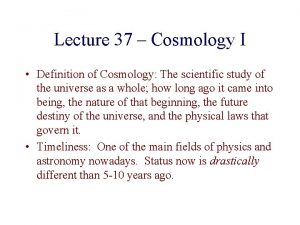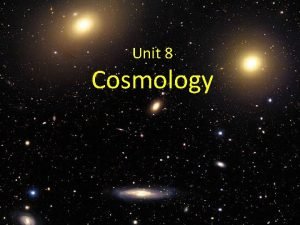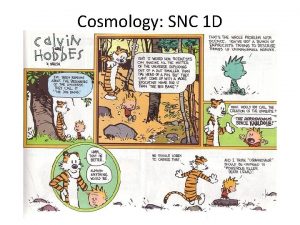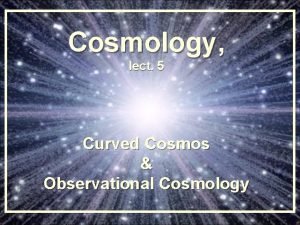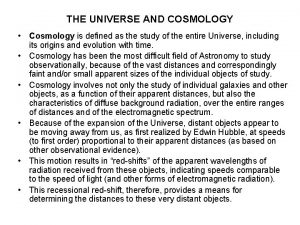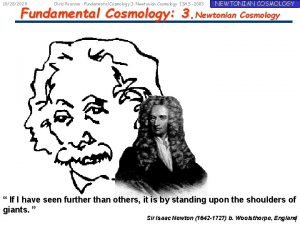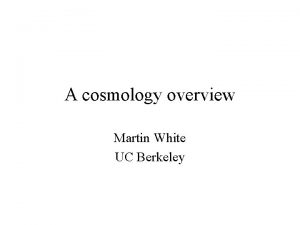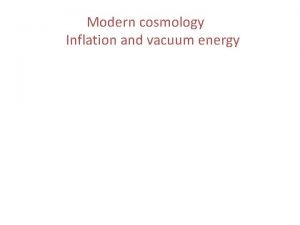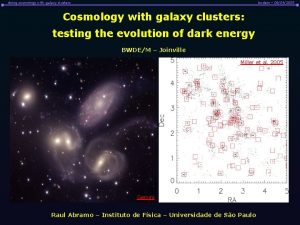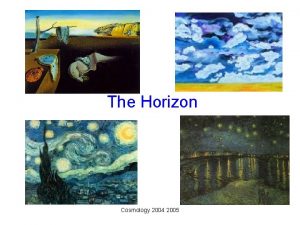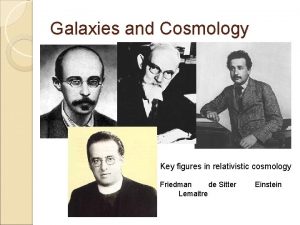Cosmology I Definition of Cosmology The scientific study



















- Slides: 19

Cosmology I • Definition of Cosmology: The scientific study of the universe as a whole; how long ago it came into being, the nature of that beginning, the future destiny of the universe, and the physical laws that govern it. • Timeliness: One of the main fields of physics and astronomy nowadays. Status now is drastically different than 10 -15 years ago.

How we can talk about cosmology…. Large look-back times show the universe when it was different

The scientific basis of modern cosmology Hubble’s Law V = H 0 d The universe is expanding

A Model Universe Demo

With this “toy” model, you can show: • Hubble’s Law, v=H 0 d • There is no center to the expansion, if you see Hubble’s Law, there is still nothing special about your location • The physical significance of Hubble’s Constant: the time since the expansion began, thus the age of the universe

If the universe is expanding now, what will it do in the future?

If cosmology is to be a branch of physical science, there must be an underlying mathematical structure with quantitatively testable predictions • • There are two things going on in the universe Galaxies are flying apart due to the universal expansion The force of gravity is acting to pull them back again The story of the universe is competition between universal expansion and gravity

How to describe gravity: General Relativity • Dynamics takes place in a four dimensional spacetime • Mass induces warping or curvature of spacetime • Spacetime curvature may also exist in the absence of mass (cosmological constant)

A modern description of the evolution of the universe • The basic mathematical language that we use in describing the universe • What are the main observational results that have been obtained? • Will follow Chapter 26

Section 26. 1, the Hubble Constant and the Age of the Universe…see lecture last Friday

Question 1: how can we describe the whole universe by a simple (to physicists) equation? Say it with equations!

A physical theory of the universe • Start with Einstein field equations (too tough) • Assume universe approximated by smoothed-out paste, characterized by its mean density • Assume universe is homogeneous • Assume universe is isotropic Cosmological Principle Such a mathematical model is called a Friedmann Universe


The theory of the universe says space is curved on large scales. What does this mean? • I think it is simpler to interpret this statement mathematically…geometry is non-Euclidean. • Example of non-Euclidean geometry: theorem of Pythagoras is not true. • Curved surfaces in 3 D space have non. Euclidean geometry

Example 1: space with positive curvature: the surface of a sphere You would have flunked Sophomore geometry

Interesting historical aside Karl Friedrich Gauss thought of this, and sent out surveyors to test if the geometry in Hanover really was Euclidean

The case of zero curvature: Euclidean space

Final case: that of negative curvature: the surface of a saddle

Within the context of General Relativity, all three cases of curvature (positive, negative, zero) are theoretical possibilities. All three possibilities give universes which expand with time The question is: what kind of universe do we live in?
 Definition of cosmology
Definition of cosmology Cosmology
Cosmology Critical density
Critical density Scale factor cosmology
Scale factor cosmology Multipole expansion
Multipole expansion Stav zalel
Stav zalel Crossover cosmology
Crossover cosmology Concordance model of cosmology
Concordance model of cosmology Cosmology
Cosmology Cosmology
Cosmology Newton cosmology
Newton cosmology Cosmology
Cosmology Intro to cosmology
Intro to cosmology Jain
Jain Information gathered during an experiment
Information gathered during an experiment How is a scientific law different from a scientific theory?
How is a scientific law different from a scientific theory? Language
Language Social psychology is the scientific study of
Social psychology is the scientific study of Sociology major
Sociology major India baby tossing
India baby tossing
